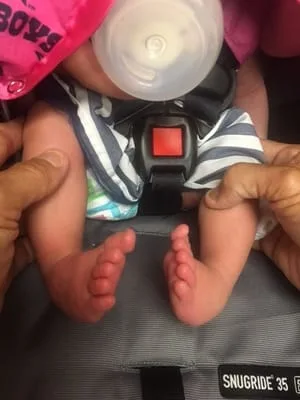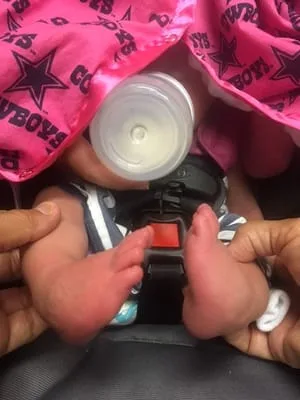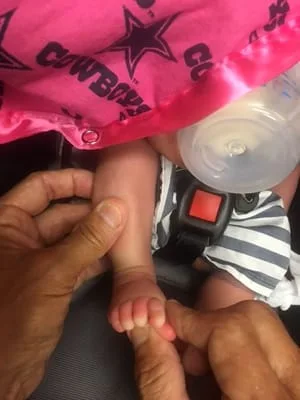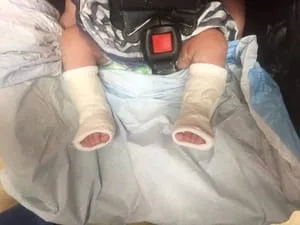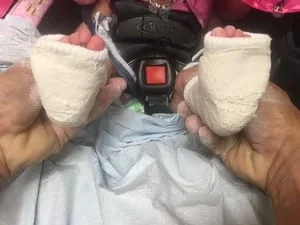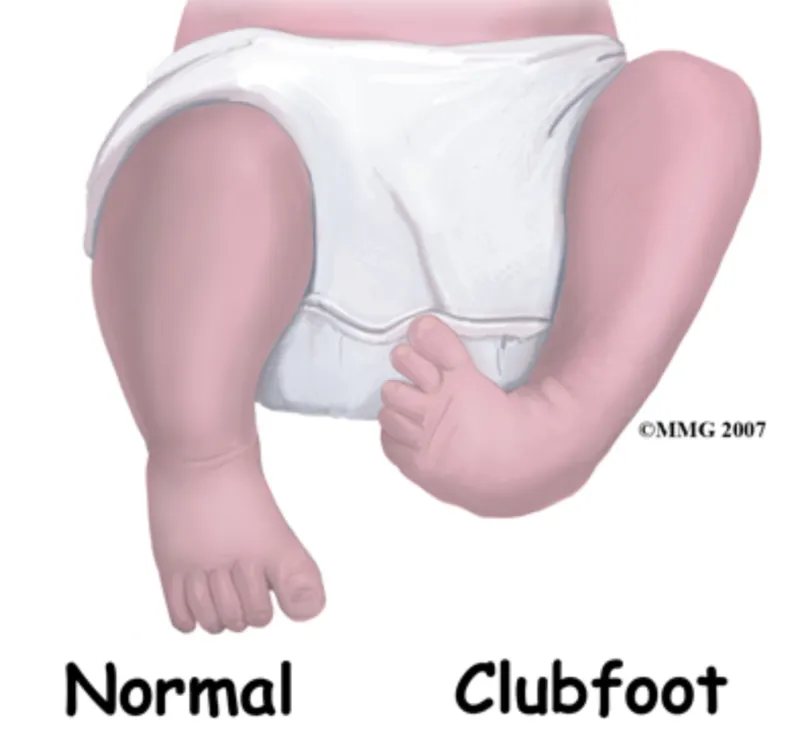
Below is an illustration of the foot of a child with congenital clubfoot comparing the boney structure to the clinical apperance with the inward devation of the heel bone and forefoot creating a c-shaped foot.

Discussion:
- Congenital clubfoot is a structural foot deformity that is present at birth
- There is in utero malalignment of the talocalcaneal, talonavicular and calcaneocuboid joints
- Articular malalignments are fixed by contracted joint capsules, ligaments, and contracted foot and ankle tendons.
- May be bilateral in up to 50%
- Occurs in about 1 out of 800 births
- More common in males than females
- Pathanotomy
- Genetic tendency
- If both parents are normal with affected child, risk of next child having clubfoot is 2-5%
- With one affected parent and one affected child, then risk of next child having clubfoot is about 10-25%
-
In some syndromes such as diastrophic dwarfism, there is autosomal
recessive inheritance
Different diagnosis:
- Muscular dystrophy
- Myelomeningocele
- Polio
- Peroneal type of progressive muscle atrophy
-
Cerebral Palsy
Treatment options:
- Clubfoot casting
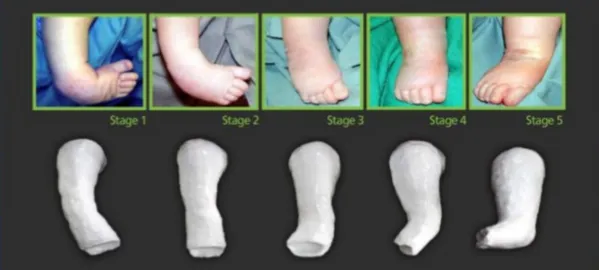
Surgical options:
- Circumferential release "Cincinnati Incision
- Medial Release
- Posterior Release
- Posteromedial release
- Tendon transfers
Salvage procedures:
- Combined soft tissue and bone procedures
- Arthrodesis / osteotomy
- Triple arthrodesis
Forefoot adduction deformity:
- Surgery is advocated in children older than age 4, or when the medial cuneiform ossific nucleus is well developed
-
Talectomy
Pics Below of Serial Casting for a Cavovarus foot that is reducible in a 5 week old.
